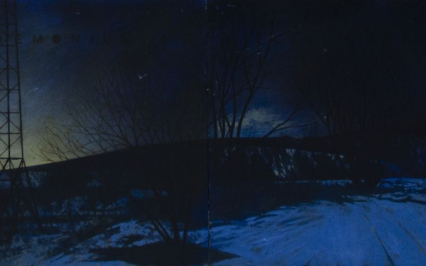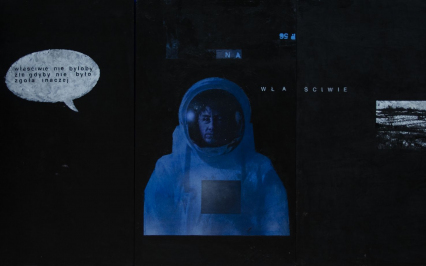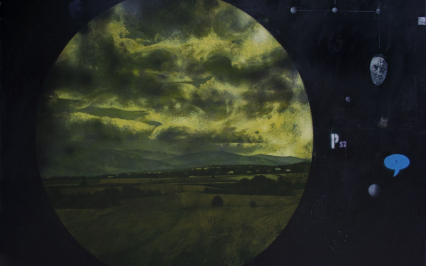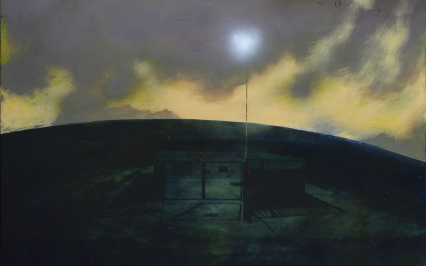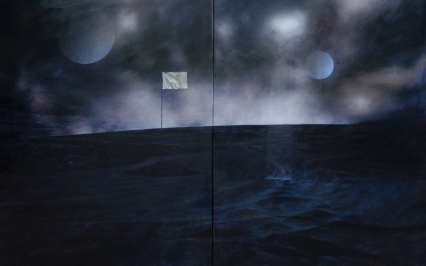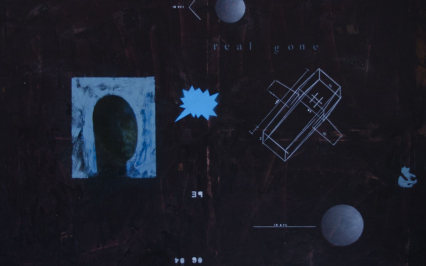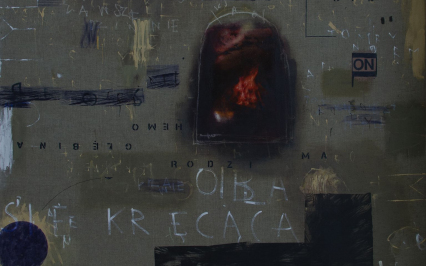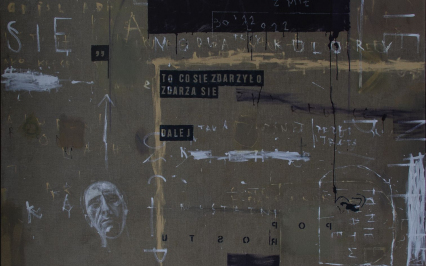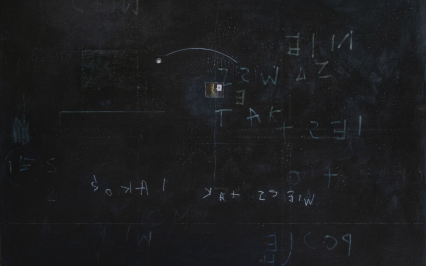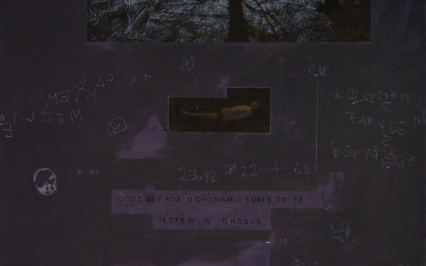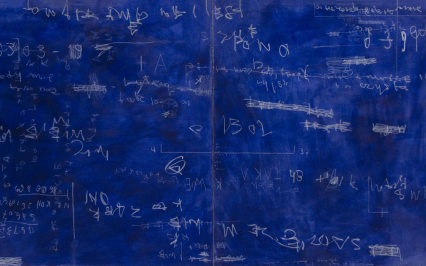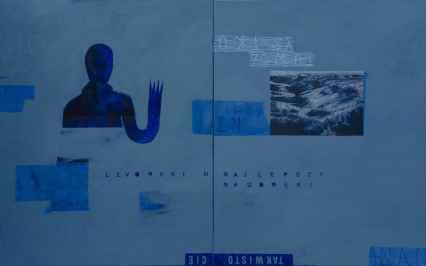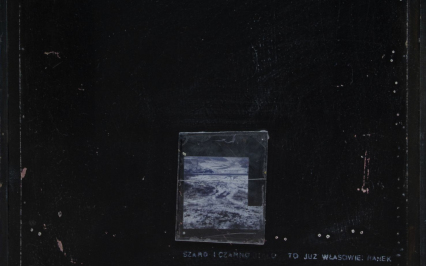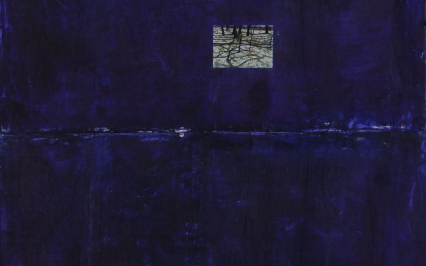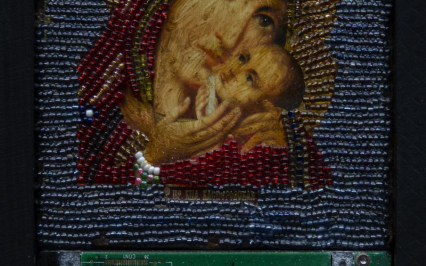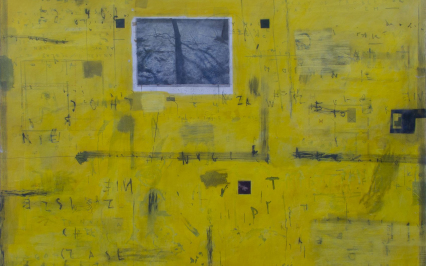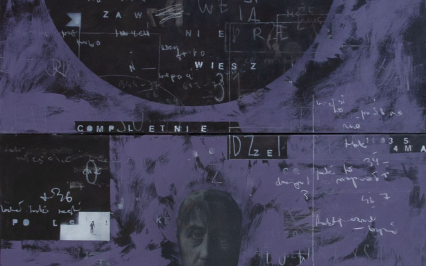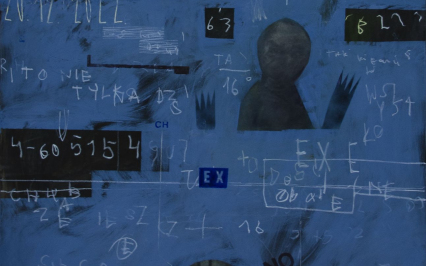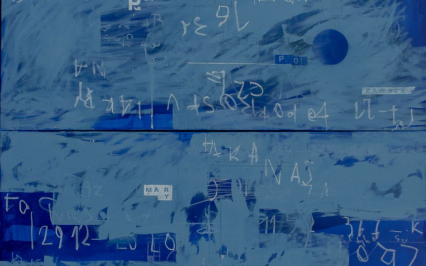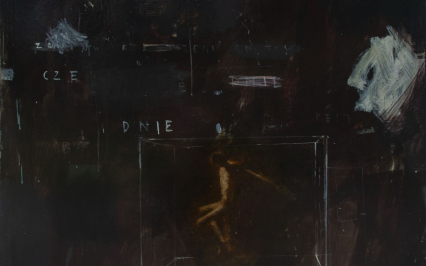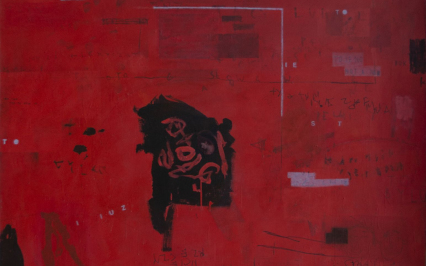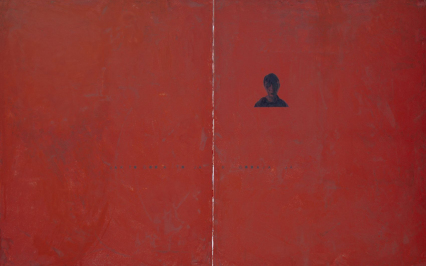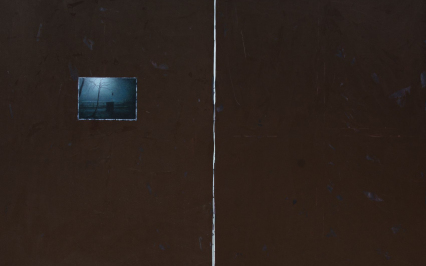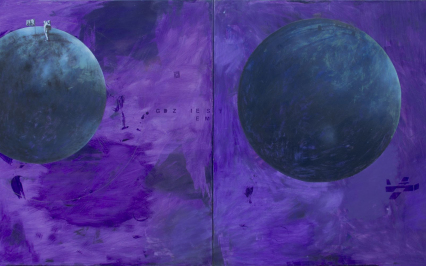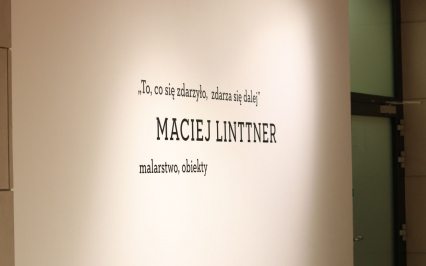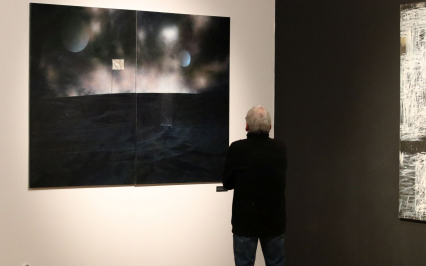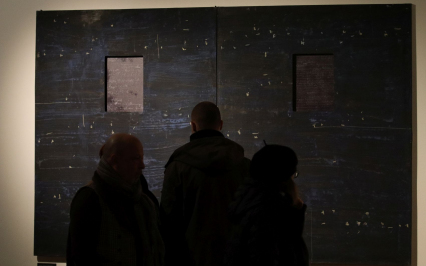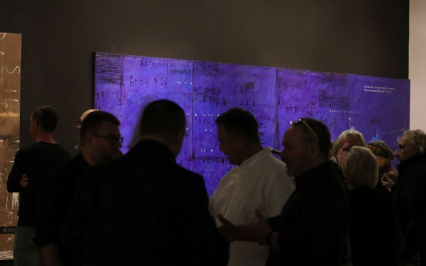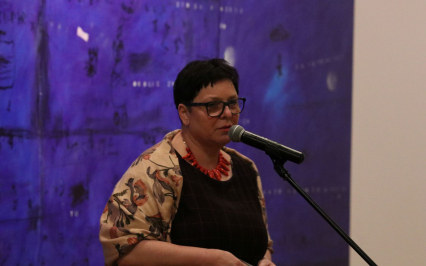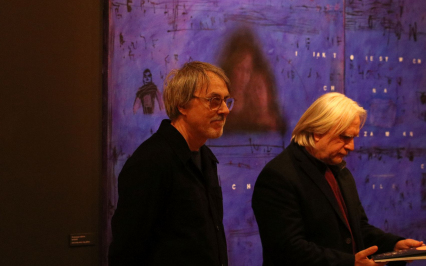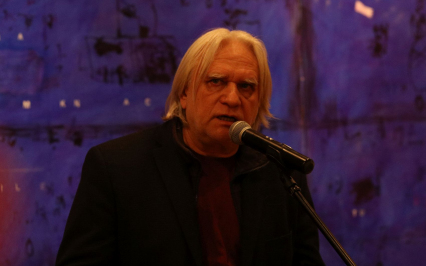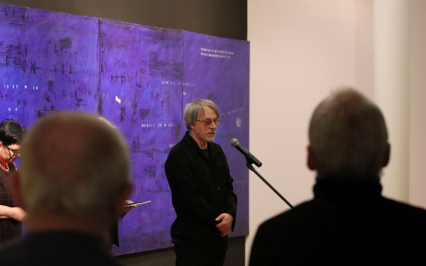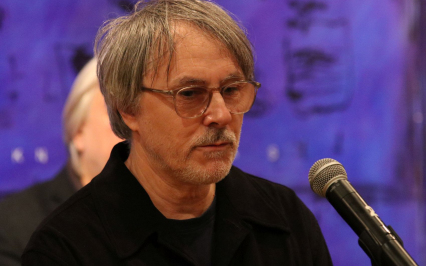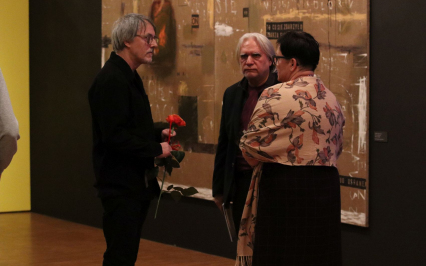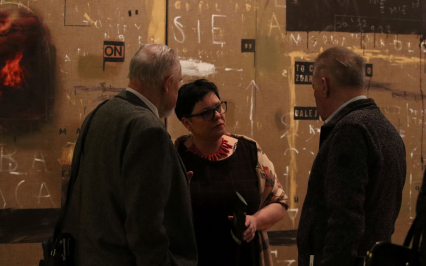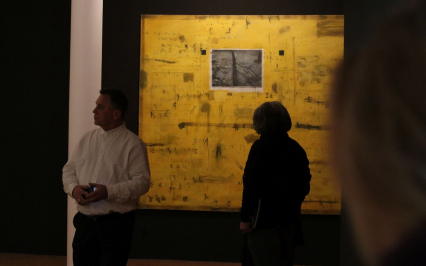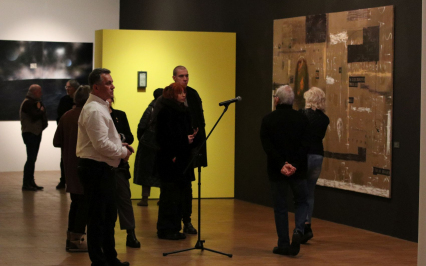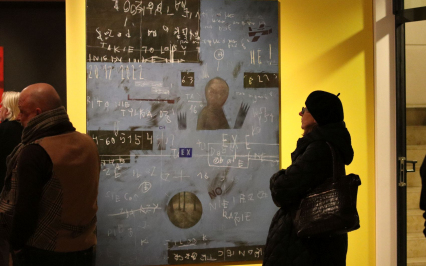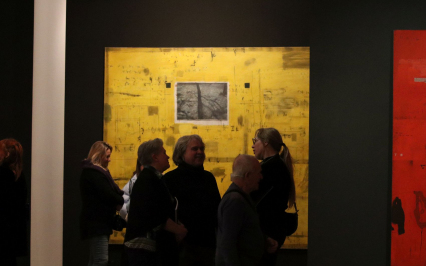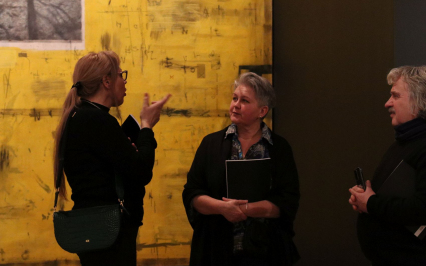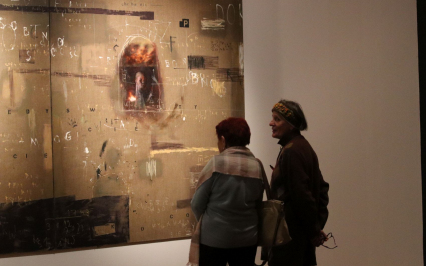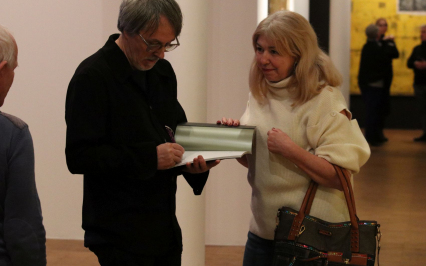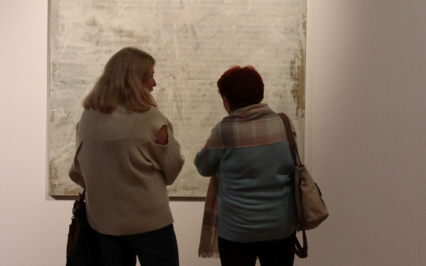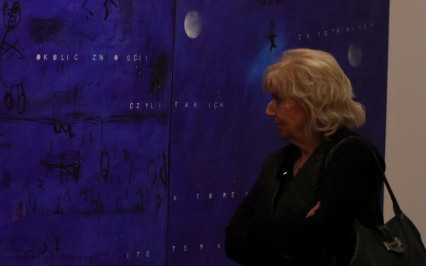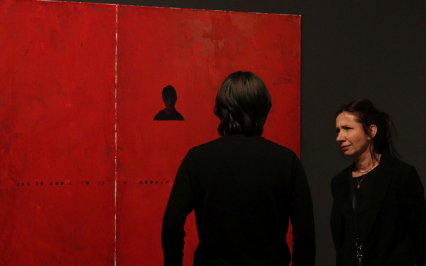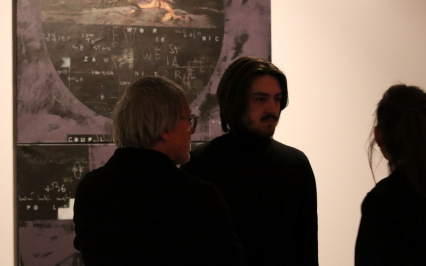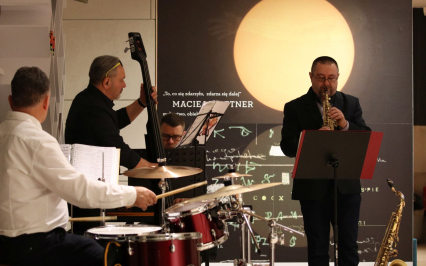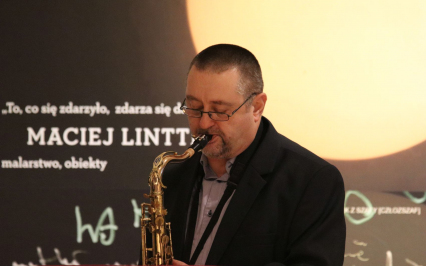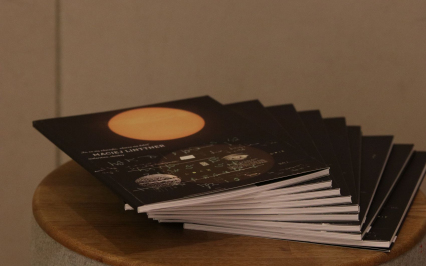"What has happened is still happening" MACIEJ LINTTNER
10 February - 10 April 2023
BWA SOKÓŁ Gallery of Contemporary Art
vernissage:
10 February 2023, hour 18:00
Additional information:
Exhibition opening hours:
Monday: closed
Wednesday: 11:00 a.m. - 4:00 p.m.
Tuesday, Thursday, Friday: 11:00 a.m. - 6:00 p.m.
Saturday - Sunday and holidays: 11:00 a.m. - 5:00 p.m.
Monday: closed
Wednesday: 11:00 a.m. - 4:00 p.m.
Tuesday, Thursday, Friday: 11:00 a.m. - 6:00 p.m.
Saturday - Sunday and holidays: 11:00 a.m. - 5:00 p.m.
An exhibition of works by Maciej Linttner, titled "What has happened is still happening".
About myself using the third person singular (apparently this is a recipe for effective emotion control)
What has happened is still happening.
The above thought, expressing essentially the idea of repetitiveness, is not comforting for art, though art, as an independent dimension, should be indifferent to the above concept. This sounds much worse to those who use the ambiguous mystery of artistic nuances and ruffle their colorful feathers. They do not pay attention to such subtleties, artificially reviving all synonyms of novelty that may guarantee success. The man, since we got down from the tree and started to show our individuality in a group, has become influential, thus invariably demonstrating the weakness of one’s individuality. And so we reached the contemporary era, equipping ourselves in views that are nothing but a conglomerate of various influences, known as circumstances. Surely, we believe they are ours, human vanity could fill up oceans if only they were empty rather than brimful of salt water.
Since we have come to the present times, we must bear in mind that they last only until tomorrow.
The above thought, expressing essentially the idea of repetitiveness, is not comforting for art, though art, as an independent dimension, should be indifferent to the above concept. This sounds much worse to those who use the ambiguous mystery of artistic nuances and ruffle their colorful feathers. They do not pay attention to such subtleties, artificially reviving all synonyms of novelty that may guarantee success. The man, since we got down from the tree and started to show our individuality in a group, has become influential, thus invariably demonstrating the weakness of one’s individuality. And so we reached the contemporary era, equipping ourselves in views that are nothing but a conglomerate of various influences, known as circumstances. Surely, we believe they are ours, human vanity could fill up oceans if only they were empty rather than brimful of salt water.
Since we have come to the present times, we must bear in mind that they last only until tomorrow.
The exhibition titled What has happened is still happening consists of the works stemming directly from the events that, theoretically, have real gone. The set is full of the past frames and commentaries to both unimportant and forgotten moments. Each minute spent on the road to the goals which inevitably end in a tailored coffin, becomes, willy-nilly, a history. In the paintings the fragments of the past events drift in a structure as abstract as time. Time which once, for the purpose of maintaining order and for logical convenience was once marked with digits. Digits are conspiratorial signs, traces of drawing origin, whose original intentions include the primary notation. That note establishing the sets of calendars was made in order to select something essential out of the tangle of common, persistent thoughts. The search conducted within this project is determined by the variable pulse of the sketchbook in which moments of various temperament and uncoordinated hierarchy of value mingle. According to dictionaries, a note is some content written down hastily in order to remember something. It constitutes as if tearing off something exceptional from the space in which it functioned so that it could be used as foundation of new reality. We could define similarly the intentions included in these works, if we adopt an absurd assumption that the traces left on the canvas by paint can be somehow described with words.
Absurdity is part of our reality, thriving thanks to the support of modern technologies. It is the driving force of many, totally unnecessary ideas. Confronted with the same reality, regardless of the logic it contains, the author of this project on happening is slowly becoming (interestingly) similar to good wine. But unlike wine, the author is not becoming better, but following an equally precise frequency, he is becoming more and more uncertain. This kind of feeling seizes him to such an extent that he frequently has doubts concerning even his own existence. Also all his life experience develops paradoxically a belief that he is stuck in a state of no possible certainties. A question thus arises whether this is a manifest of life wisdom caused by a thorough observation of everyday life, or a side effect of the disease, developed thanks to the same rapid series of events. Probably this system of connected vessels lives in some sort of a symbiosis that is impossible to decipher. The man, as part of nature can only be deciphered partially, for the superficial needs of social systems in which he is entangled. Anyway, it is not easy to be so permeated with doubts among so many who know everything.
Absurdity is part of our reality, thriving thanks to the support of modern technologies. It is the driving force of many, totally unnecessary ideas. Confronted with the same reality, regardless of the logic it contains, the author of this project on happening is slowly becoming (interestingly) similar to good wine. But unlike wine, the author is not becoming better, but following an equally precise frequency, he is becoming more and more uncertain. This kind of feeling seizes him to such an extent that he frequently has doubts concerning even his own existence. Also all his life experience develops paradoxically a belief that he is stuck in a state of no possible certainties. A question thus arises whether this is a manifest of life wisdom caused by a thorough observation of everyday life, or a side effect of the disease, developed thanks to the same rapid series of events. Probably this system of connected vessels lives in some sort of a symbiosis that is impossible to decipher. The man, as part of nature can only be deciphered partially, for the superficial needs of social systems in which he is entangled. Anyway, it is not easy to be so permeated with doubts among so many who know everything.
The set of the discussed works, however, results from encoded needs and originated on the sidelines of the above-mentioned uncertainty. Submerging it in the currents of melancholy reaches far greater depths that connotations with uncertain streams of liquid everyday life. Therefore these works avoid clear messages and desire to be perceived only in the painting dimension. This dimension seems to be rooted in regions far away from all curator descriptions. Probably, they are closer to the painting that attempt at visualizing the internal, wide space symbolically defined as the sphere of sacrum. Even if this is quite opposite, these works are not indifferent to the deep recesses of dark altars. And especially when this darkness thickens each year. Apparently everything is connected with everything before it dissolves in holy nothingness. Maybe this abyss will be deep ebony black with a tint of brown. This color, being the result of all colors encountered on the way, may become some sort of the universe. And a resultant of the past events which are happening again and again. Many of the paintings constituting this exhibition have been changed and repainted after many years. They have thus become an accumulation of all experienced gathered on the way. The return to the past threads and the attempt at making them contemporary is also becoming the implementation of the thought included in the title repetitiveness.
The exhibition is formally divided into two parts. One of them consists of large format oil paintings, the other – a collage set of works composed of paintings, objects, a book and a film. The book and the film describe the same story inspired by a book published in 1939, titled “Florentische Malerei” from the “Die Schonsten Bilder Der Welt” cycle. The story is titled “The Florence Cauldron” and was published in the book titled “The Notes on the Lack of Knowledge” published in 2014. The objects are fragments of “The Wardrobe”, a private library comprising the author’s books. “The Wardrobe” is to constitute a coherent organism that connects and permeates all threads of search concerning the artistic book. Each of these threads has its own ambitions, which in this case should have its confirmation. The paintings in this selection are common works on boards that were created during the pandemic. The repeated motif of an astronaut has become a temporary synonym of isolation. The concept of a moment is a significant point of the whole located in the essence of the “happening”, that is in a certain point of closer or more distant past.
Maciej Linttner




